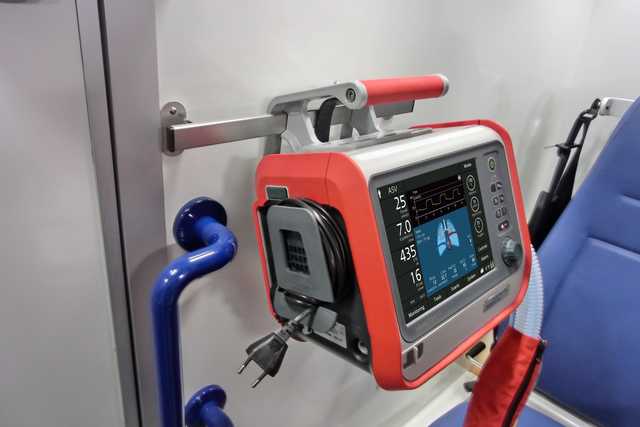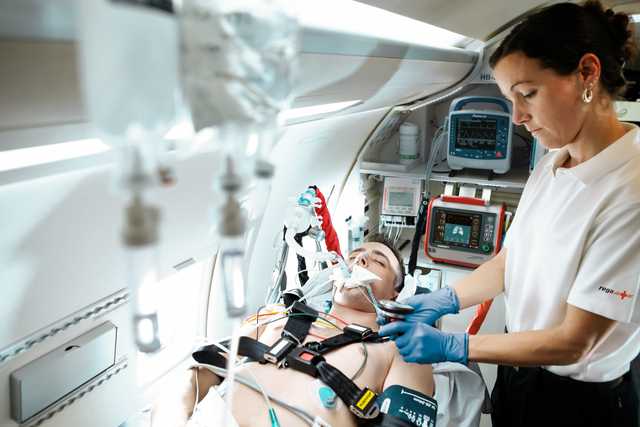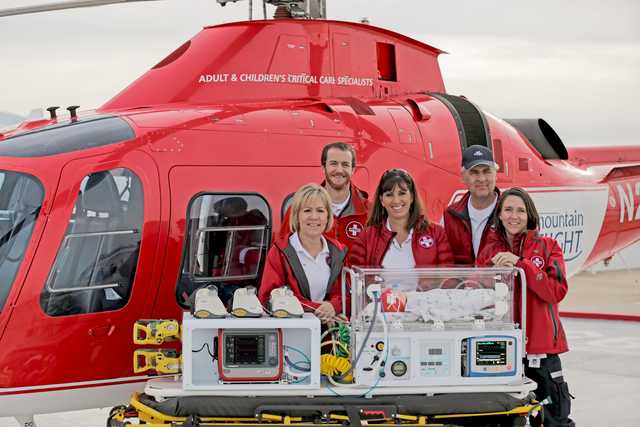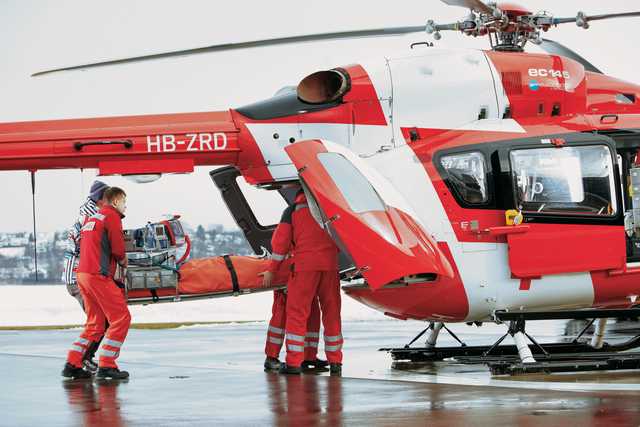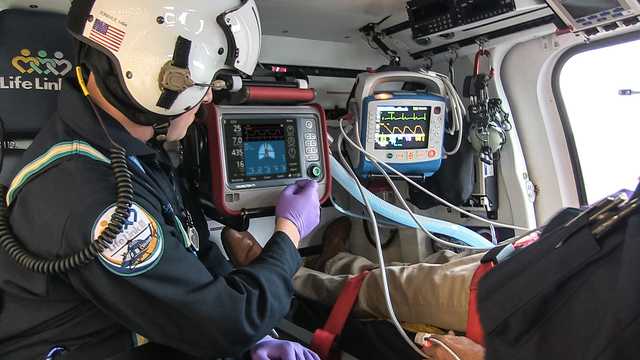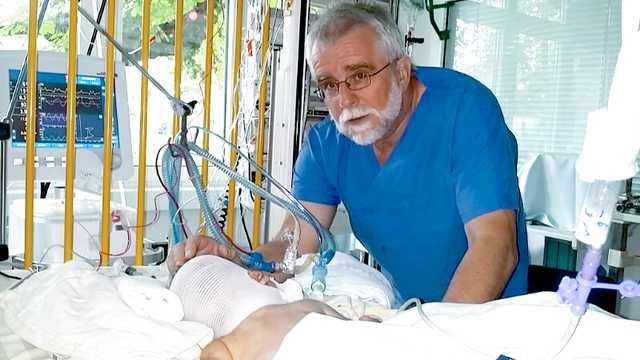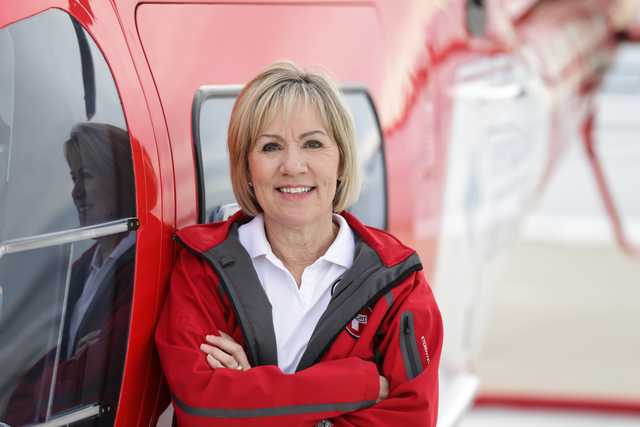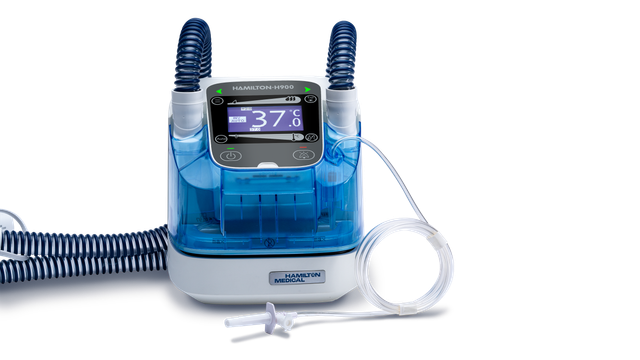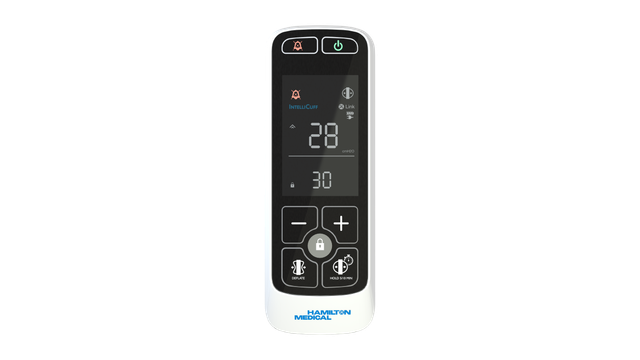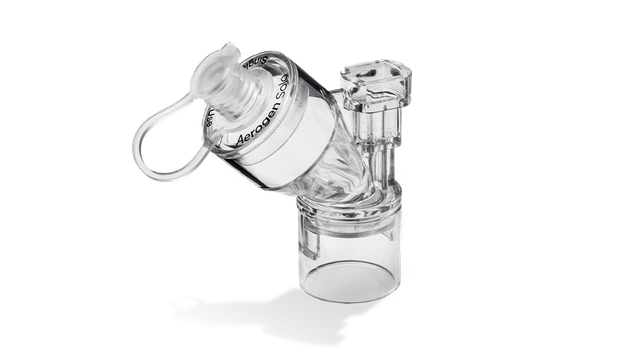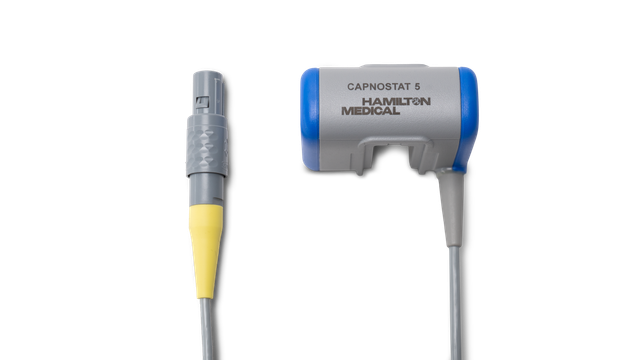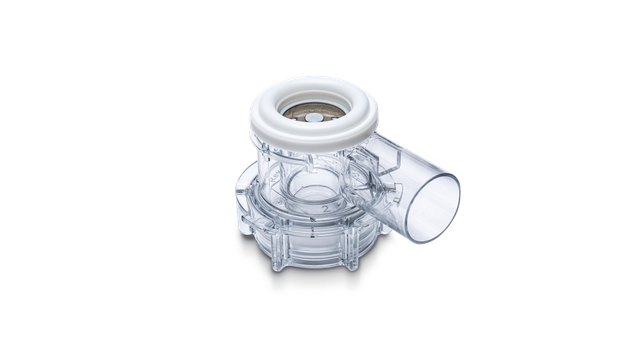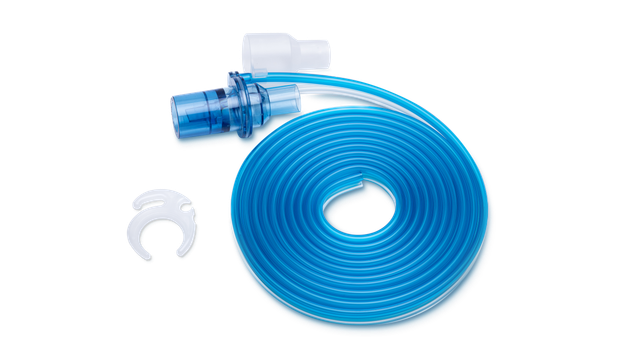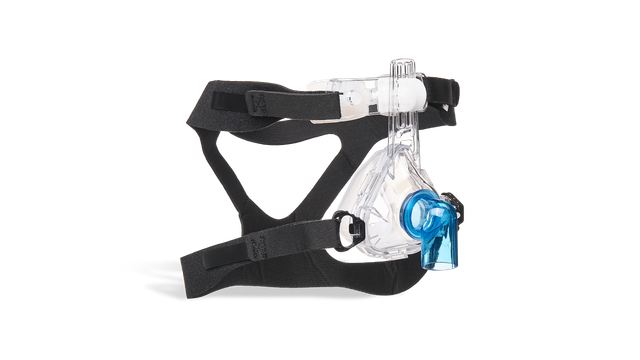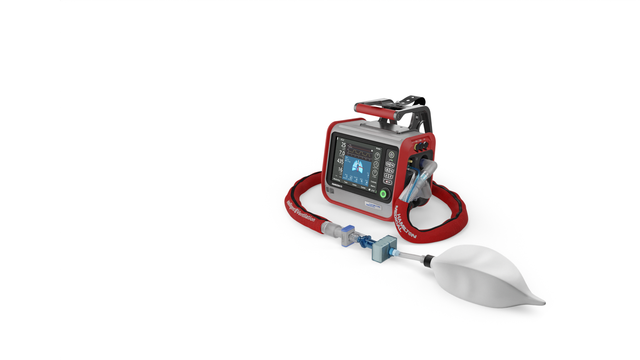
Notre spécialiste du transport ! Du nouveau‑né à l'adulte

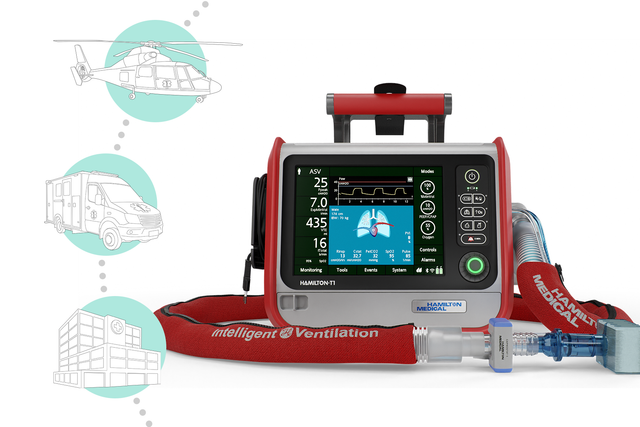
Notre spécialiste du transport ! Du nouveau‑né à l'adulte
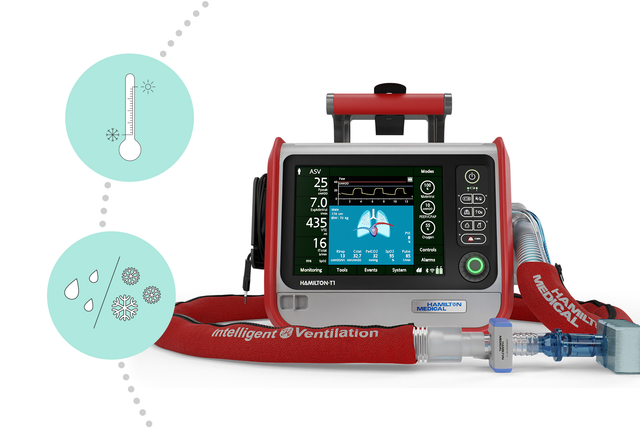
La loi du plus fort ! Dans les situations les plus critiques
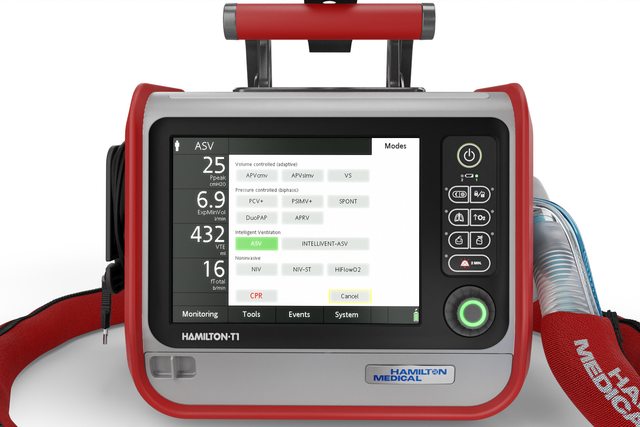
Thérapie de ventilation en continu. Utilisez les mêmes mode et réglages qu'au chevet du patient
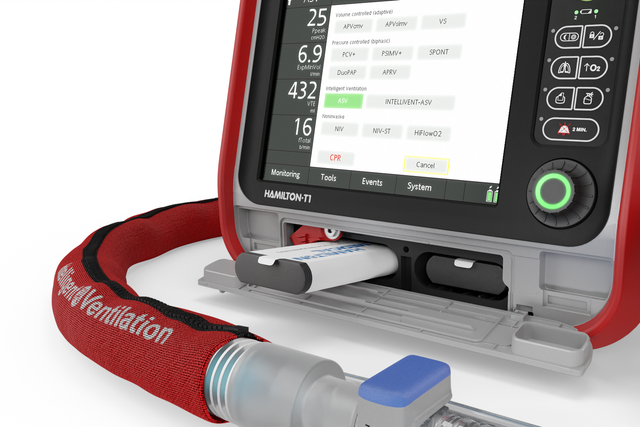
Totalement indépendant. Pas besoin d'air comprimé et fonctionnement sur batterie
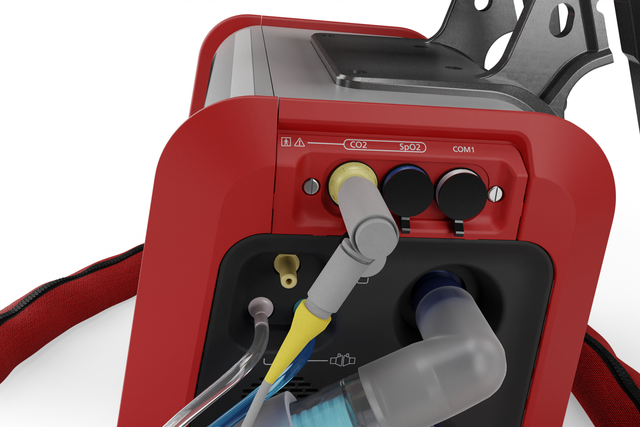
La communication : le facteur clé. Pour une meilleure connexion
Options de la carte de communication pour :

Restez informé. Sans fil
Accédez aux données respiratoires sur votre appareil mobile grâce à l'application Hamilton Connect. Elle fournit également des outils conçus pour faciliter et rationaliser votre processus de ventilation.
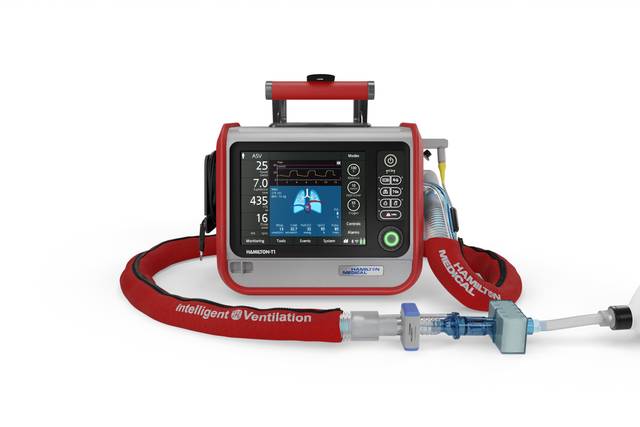
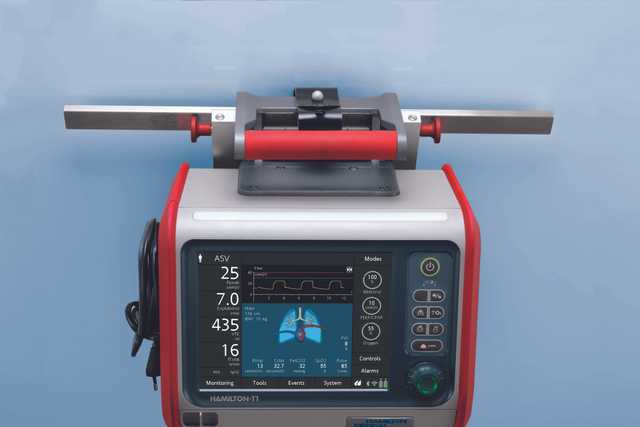
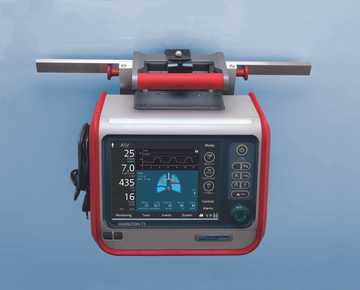
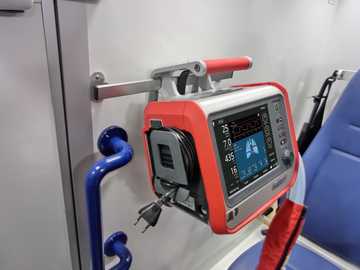
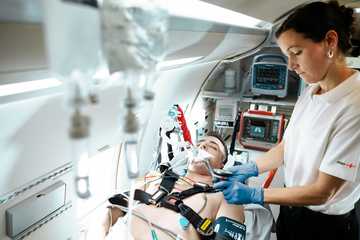
Bouclez votre ceinture. Solutions de montage pour un transport en douceur
Plusieurs solutions sont disponibles pour tous les principaux types d'hélicoptères et d'ambulances, ainsi que pour les lits d'hôpitaux, les brancards, les surfaces, les étagères, les potences, les rails et les plafonds.
Grâce aux quatre types différents de poignées et plusieurs supports, le HAMILTON‑T1 est un ventilateur qui s'adapte à votre environnement et votre situation spécifique.
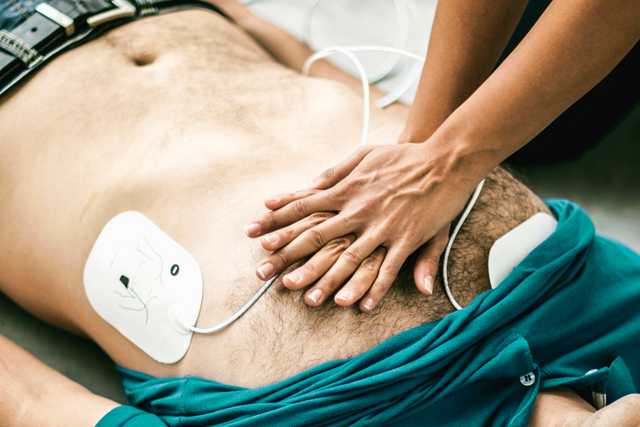
Code bleu ! Assistance pendant la RCP
La ventilation RCP adapte les réglages de la ventilation si vous devez effectuer une RCP. Elle affiche les principaux paramètres et courbes de monitorage en fonction de la situation et prend en charge le processus avec un accès rapide aux réglages préconfigurables, un réglage adapté des alarmes et du déclenchement et l'affichage d'un chronomètre RCP.
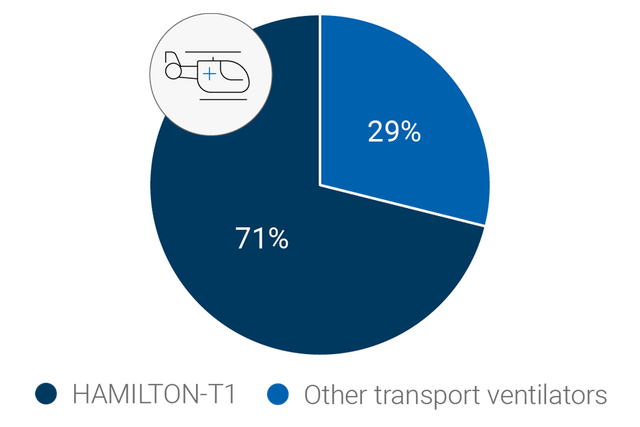
Le choix le plus populaire. Pour 71 % des hélicoptères de soins intensifs
En tant que ventilateur de transport pour les ambulances, les hélicoptères et bien plus encore, le HAMILTON‑T1 est l'un des ventilateurs préférés de bon nombre d'équipes de secours. D'après l'étude en ligne HOVER (

Ne vous contentez pas des normes. Dépassez‑les.
Les ventilateurs adaptés aux pandémies et autres situations impliquant de nombreuses victimes doivent être polyvalents et répondre à diverses exigences. Le HAMILTON‑T1 respecte voire dépasse toutes les exigences des recommandations de l'AARC, Guidelines for Acquisition of Ventilators to Meet Demands for Pandemic Flu and Mass Casualty Incidents (Recommandations pour l'acquisition de ventilateurs pour répondre à la demande en cas de pandémie de grippe et lors de situations impliquant de nombreuses victimes)(
Vous voulez en savoir plus ?
Découvrir le modèle 3D
Découvrez le HAMILTON‑T1 sous chaque angle et cliquez sur les zones réactives pour en savoir plus.
Pour des informations rapides
- Standard
- Option
- Non disponible
| Groupes de patients | Adulte/Enf., Néonatal |
|---|---|
| Dimensions (L × P × H) | 320 x 220 x 270 mm (unité de ventilation) 630 x 630 x 1 380 mm (sans poignée) 630 x 630 x 1 433 mm (avec poignée) |
| Poids | 6,5 kg 18,5 kg avec chariot |
| Taille et résolution du moniteur | Diagonale 8,4 po (214 mm) 640 x 480 pixels |
| Moniteur amovible | |
| Durée de fonctionnement de la batterie | 4 h avec une batterie 8 h avec deux batteries |
| Batterie remplaçable à chaud | |
| Alimentation en air | Turbine intégrée |
| Connecteur O2 | DISS (CGA 1240) ou NIST |
| Connectivité | CO2/Appel infirmière/COM1, CO2/SpO2/COM1, CO2/SpO2/Humidificateur et COM1, port USB, port Ethernet RJ‑45 |
| Volume | 43 dB en fonctionnement normal |
| Volume contrôlé, débit contrôlé | |
|---|---|
| Volume ciblé, pression adaptative contrôlée | |
| Ventilation intelligente | ASV®, INTELLiVENT®‑ASV® (option) |
| Ventilation non invasive | |
| Débit haut | |
| Visualisation de la mécanique pulmonaire (Poumon dynamique) | |
|---|---|
| Visualisation de la dépendance du patient au ventilateur | |
| Mesure de la pression œsophagienne | |
| Capnographie | |
| Monitorage de la SpO2 |
| Évaluation de la capacité de recrutement et recrutement pulmonaire (P/V Tool Pro) | |
|---|---|
| Synchronisation patient/ventilateur (IntelliSync+) | |
| Ventilation RCP | |
| Module Hamilton Connect |
| Connexion à distance à l’humidificateur HAMILTON‑H900 | |
|---|---|
| Contrôleur de pression du ballonnet IntelliCuff intégré | |
| Nébuliseur pneumatique intégré | |
| Nébuliseur Aerogen intégré | |
| Compatibilité avec le système d’administration d’anesthésiques Sedaconda ACD‑S |
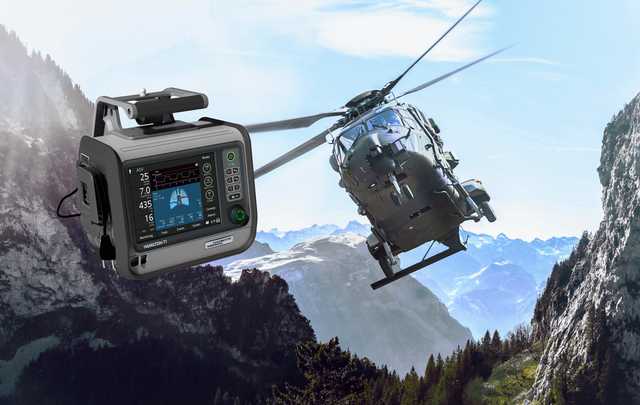
L'appel du devoir. Le ventilateur pour forces armées
Une exposition à des conditions extrêmes signifie qu'un ventilateur pour forces armées doit répondre à des exigences très spéciales. C'est là qu'intervient le HAMILTON‑T1 militaire.
Pour vos patients
Les solutions de ventilation intelligente en un coup d'œil
ASV® ‑ Adaptive Support Ventilation®. Pour une adaptation 24 heures sur 24
Le mode de ventilation à aide adaptative (ASV) ajuste en continu la fréquence respiratoire, le volume courant et le temps inspiratoire à chaque cycle en fonction de la mécanique et de l'activité respiratoires du patient, 24 heures sur 24, de l'intubation à l'extubation.
INTELLiVENT®‑ASV. Pour une assistance au chevet du patient
Le mode de ventilation intelligente INTELLiVENT‑ASV contrôle en continu la ventilation et l'oxygénation du patient.
Il règle la ventilation minute, la PEP et l'oxygène en fonction des cibles définies par le médecin et des paramètres physiologiques du patient.
Nébuliseur intégré. Pour des traitements supplémentaires
Le nébuliseur pneumatique intégré est entièrement synchronisé avec les cycles d'inspiration et d'expiration.
Un nébuliseur Aerogen intégré et synchronisé est disponible en option (
L'administration d'une fine brume de particules de médicaments par aérosol permet d'inverser le bronchospasme, d'améliorer l'efficacité de la ventilation et de réduire l'hypercapnie chronique (
Thérapie à haut débit par canule nasale. Pour les inconditionnels d'O2
La thérapie à haut débit par canule nasale (
Ventilation RCP. Pour les secouristes
La ventilation RCP adapte les réglages du ventilateur pendant la réanimation. Elle prend en charge le processus de RCP avec un accès rapide aux réglages préconfigurables, un réglage adapté des alarmes et du déclenchement et l'affichage d'un chronomètre RCP.
Les principaux paramètres et courbes de monitorage en rapport avec la ventilation RCP sont aussi affichés.
Capnographie volumétrique. Pour les CO2ntrol freaks
La mesure du débit proximal et du CO2 permet à nos ventilateurs de réaliser une capnographie volumétrique à la pointe de la technologie. Ces données constituent une référence importante pour évaluer la qualité de la ventilation et l'activité métabolique.
Panneau État Vent. Pour ceux qui sont prêts au sevrage
Le panneau État Vent affiche six paramètres relatifs à la dépendance du patient au ventilateur, notamment l’oxygénation, l’élimination du CO2 et l’activité du patient.
Une réglette variable, mobile de haut en bas dans chaque colonne, représente la valeur actuelle pour un paramètre donné.
Accès à l'humidificateur à distance. Pour votre confort
L'option de connectivité unique du ventilateur permet de commander l'humidificateur HAMILTON‑H900 (
L'humidificateur peut également sélectionner automatiquement le mode d'humidification (invasif, non invasif ou haut débit) en fonction du mode de ventilation sélectionné.
Valve de phonation. Pour les bavards
L'option de valve de phonation permet aux patients trachéotomisés de parler et même d'avaler, tout en recevant une assistance respiratoire.
Le monitorage, le déclenchement et la gestion des alarmes du ventilateur ont été ajustés pour être compatibles avec les valves de phonation en modes à pression contrôlée (VPC, VS/AI, VPC‑VACI).
Sevrage rapide. Pour les esprits indépendants
L'option Sevrage rapid. est une fonctionnalité du mode l'INTELLiVENT‑ASV qui garantit un monitorage dynamique continu et contrôle les critères patient pour évaluer la possibilité de procéder à l'extubation du patient.
Panneau Poumon dynamique. Pour ceux qui aiment voir les choses
Le panneau Poumon dynamique vous montre une représentation graphique en temps réel des données de monitorage importantes suivantes :
- Compliance et résistance
- Déclenchement par le patient
- SpO2
- Fréquence de pouls
Boucles et tendances configurables. Pour les statisticiens
Le ventilateur peut afficher une boucle dynamique fondée sur une combinaison de paramètres monitorés sélectionnés. Grâce à la fonction de tendance, vous pouvez voir les informations de tendance affichées pour les paramètres de monitorage et la plage de temps de votre choix.
Le dispositif mémorise en continu les paramètres monitorés, même en mode de veille.
Oxymétrie de pouls. Pour les passionnés de la SpO2
L'option SpO2 offre une mesure de SpO2 intégrée non invasive avec les données affichées sur votre ventilateur.
Nous proposons également une gamme complète de capteurs de SpO2.
Ventilation non invasive haute performance. Pour les porteurs de masque
Les modes de ventilation non invasive délivrent des cycles spontanés avec aide inspiratoire, cyclés en débit (mode VNI et VNI‑Fmin) et des cycles contrôlés par cycles de temps, à pression contrôlée (VNI‑Fmin).
Par rapport aux ventilateurs utilisant de l'air comprimé, nos ventilateurs à turbine sont capables de fournir des débits de pointe plus élevés. Cela garantit des performances optimales même en cas de fuites importantes.
Modes nCPAP. Pour les tout‑petits
Les modes nCPAP sont conçus de manière à paramétrer uniquement la pression CPAP souhaitée. Le débit est ensuite ajusté en fonction de l'état du patient et des éventuelles fuites. Cela évite des pressions de pointe involontaires, garantit une compensation des fuites très efficace et permet de réduire la consommation d'oxygène. L'ajustement du débit se fait très rapidement grâce à la sensibilité élevée de la mesure de pression.
Pour vous
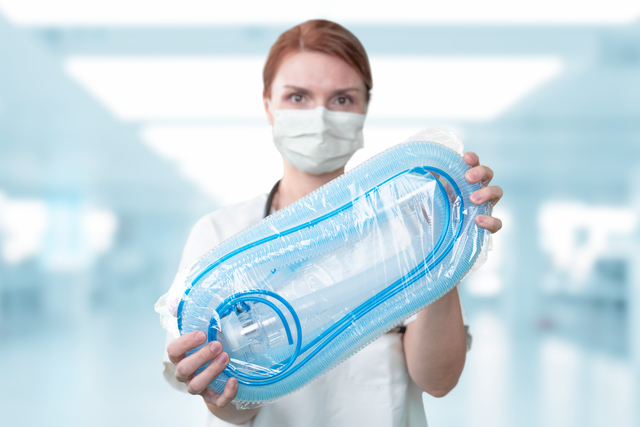
Pré‑assemblés. Et prêts à l'emploi
Nos kits de circuit respiratoire pré‑assemblés incluent les consommables essentiels au fonctionnement du ventilateur et sont livrés en un seul emballage pratique.
Tous nos consommables essentiels sont spécialement conçus pour les ventilateurs Hamilton Medical avec une qualité garantie par le fabricant.

Moins de manipulations de boutons. Plus d'ajustements pour vos patients
Pour gérer la ventilation, vous devez généralement définir plusieurs paramètres, comme la pression, le volume, les déclenchements expiratoire et inspiratoire, la pression du ballonnet, et bien plus encore. Et chaque fois que l'état de santé de votre patient change, vous devez effectuer un voire plusieurs réajustements.
Pour simplifier ce processus et diminuer le nombre de manipulations de boutons, nous avons développé plusieurs solutions :
L'ASV (ventilation à aide adaptative) est un mode de ventilation qui adapte en continu la fréquence respiratoire, le volume courant et le temps inspiratoire en fonction de la mécanique et de l'activité respiratoires du patient. Il a été montré que l'ASV réduisait la durée de la ventilation mécanique dans plusieurs populations de patients avec moins de réglages manuels (
Notre mode de ventilation intelligente INTELLiVENT‑ASV vous permet de passer du rôle de manipulateur de boutons à celui de superviseur, réduit le nombre d'interventions manuelles sur le ventilateur (
Les solutions classiques de gestion de pression du ballonnet exigent de surveiller et d'ajuster manuellement la pression du ballonnet.
Le dispositif IntelliCuff sécurise les voies aériennes de votre patient (
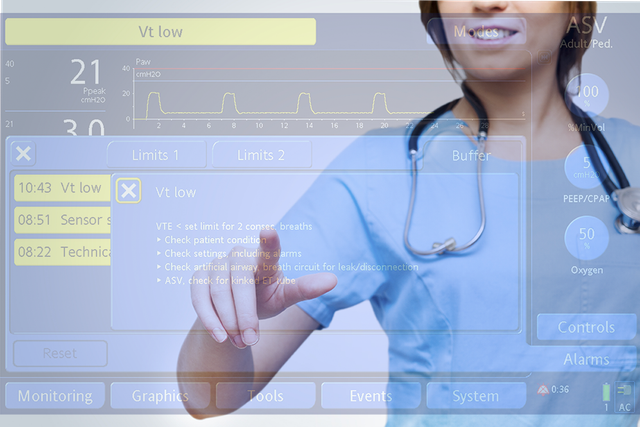
Une aide à disposition ! Dépannage à l'écran
En cas de problème, le ventilateur déclenche une alarme signalée par la zone lumineuse d'alarme, une tonalité et l'affichage d'un message à l'écran.
L'aide en ligne vous propose des options pour résoudre l'alarme.
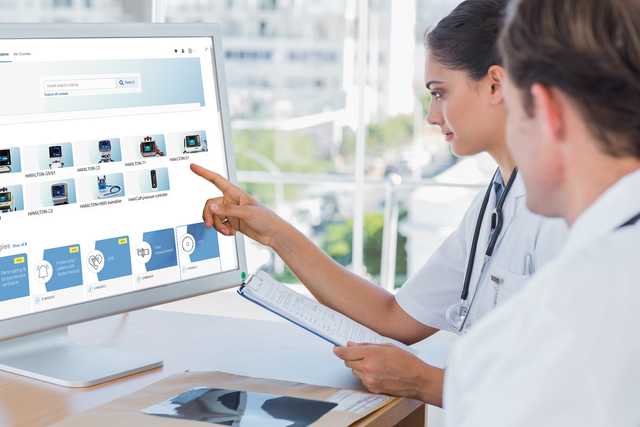
Prenez le contrôle ! Parcours d'apprentissage et contenu de formation
Notre Academy en ligne offre des parcours d'apprentissage simples à suivre pour vous familiariser le plus rapidement possible avec les produits et les technologies Hamilton Medical.
Pour le futur

Une évolution constante. Développement des capacités de votre ventilateur
Nous travaillons constamment au développement de nos produits. De nouvelles fonctionnalités sont ajoutées et des fonctionnalités existantes sont améliorées pour s'assurer que vous ayez toujours accès à la dernière technologie de ventilation tout au long de la durée de vie de votre ventilateur.


Maîtrisez‑en un, vous les maîtriserez tous. Une interface utilisateur universelle
L'interface utilisateur fonctionne de la même manière sur tous les ventilateurs Hamilton Medical et ce, indépendamment de son utilisation en USI, en salle d'examen IRM ou lors de déplacements.
Notre Ventilation Cockpit intègre des données complexes qui sont représentées visuellement de façon intuitive.
Pour une solution complète
Accessoires entièrement intégrés
Nous développons nos accessoires en gardant à l'esprit l'optimisation de la simplicité d'utilisation et de la sécurité du patient. Dès que cela est possible, nous les intégrons à nos ventilateurs pour simplifier le fonctionnement du système complet du ventilateur.
Nos consommables

Parlez à nos experts. Discutons de vos besoins
Notre équipe de spécialistes de la ventilation est heureuse de vous aider à choisir le ventilateur idéal pour votre environnement clinique et à atteindre vos objectifs thérapeutiques. Obtenez un devis personnalisé ou planifiez un rappel pour plus d'informations.
Pour plus d'informations
HAMILTON‑T1 brochure Software version 3.0.x
HAMILTON‑T1 Caractéristiques techniques de la version logicielle 3.0.x
Hamilton Connect brochure
HAMILTON‑T1 ‑ Required ventilator capabilities for pandemics or mass casualties
Hamilton Medical Une solution pour toutes les situations
Transport and storage solutions for HAMILTON‑C1/T1/MR1
Le nouveau HAMILTON‑C1/T1/MR1 SW3.0.x brochure
Références
- 1. Hilbert‑Carius, P., Struck, M.F., Hofer, V. et al. Nutzung des Hubschrauber‑Respirators vom Landeplatz zum Zielort im Krankenhaus. Notfall Rettungsmed 23, 106‑112 (2020).
- 2. Kirakli C, Naz I, Ediboglu O, Tatar D, Budak A, Tellioglu E. A randomized controlled trial comparing the ventilation duration between adaptive support ventilation and pressure assist/control ventilation in medical patients in the ICU. Chest. 2015;147(6):1503‑1509. doi:10.1378/chest.14‑2599
- 3. Tam MK, Wong WT, Gomersall CD, et al. A randomized controlled trial of 2 protocols for weaning cardiac surgical patients receiving adaptive support ventilation. J Crit Care. 2016;33:163‑168. doi:10.1016/j.jcrc.2016.01.018
- 4. Zhu F, Gomersall CD, Ng SK, Underwood MJ, Lee A. A randomized controlled trial of adaptive support ventilation mode to wean patients after fast‑track cardiac valvular surgery. Anesthesiology. 2015;122(4):832‑840. doi:10.1097/ALN.0000000000000589
- 5. Arnal JM, Garnero A, Novotni D, et al. Closed loop ventilation mode in Intensive Care Unit: a randomized controlled clinical trial comparing the numbers of manual ventilator setting changes. Minerva Anestesiol. 2018;84(1):58‑67. doi:10.23736/S0375‑9393.17.11963‑2
- 6. Bialais E, Wittebole X, Vignaux L, et al. Closed‑loop ventilation mode (IntelliVent®‑ASV) in intensive care unit: a randomized trial. Minerva Anestesiol. 2016;82(6):657‑668.
- 7. Fot EV, Izotova NN, Yudina AS, Smetkin AA, Kuzkov VV, Kirov MY. Automated Weaning from Mechanical Ventilation after Off‑Pump Coronary Artery Bypass Grafting. Front Med (Lausanne). 2017;4:31. Published 2017 Mar 21. doi:10.3389/fmed.2017.00031
- 8. Arnal JM, Saoli M, Garnero A. Airway and transpulmonary driving pressures and mechanical powers selected by INTELLiVENT‑ASV in passive, mechanically ventilated ICU patients. Heart Lung. 2020;49(4):427‑434. doi:10.1016/j.hrtlng.2019.11.001
- 9. Chenelle CT, Oto J, Sulemanji D, Fisher DF, Kacmarek RM. Evaluation of an automated endotracheal tube cuff controller during simulated mechanical ventilation. Respir Care. 2015;60(2):183‑190. doi:10.4187/respcare.03387
- 100. Dhand R. New frontiers in aerosol delivery during mechanical ventilation. Respir Care. 2004;49(6):666‑677.
- 101. Waldrep JC, Dhand R. Advanced nebulizer designs employing vibrating mesh/aperture plate technologies for aerosol generation. Curr Drug Deliv. 2008;5(2):114‑119. doi:10.2174/156720108783954815
Notes en bas de page
- A. Transfert de patients ventilés dans le cadre des Services médicaux d'urgence HEMS [Helicopter Emergency Medical Service] vers le service des urgences
- B. https://www.aarc.org/wp‑content/uploads/2020/03/ventilator‑acquisition‑issue‑paper.pdf
- D. Le HAMILTON‑H900 n'est pas homologué pour le transport.
- a. Non commercialisé dans certains pays
- b. Uniquement disponible pour HAMILTON‑C6/G5/S1
- f. Également appelée thérapie d'oxygène à haut débit. Cette terminologie peut être utilisée de façon interchangeable avec la thérapie à haut débit par canule nasale.


